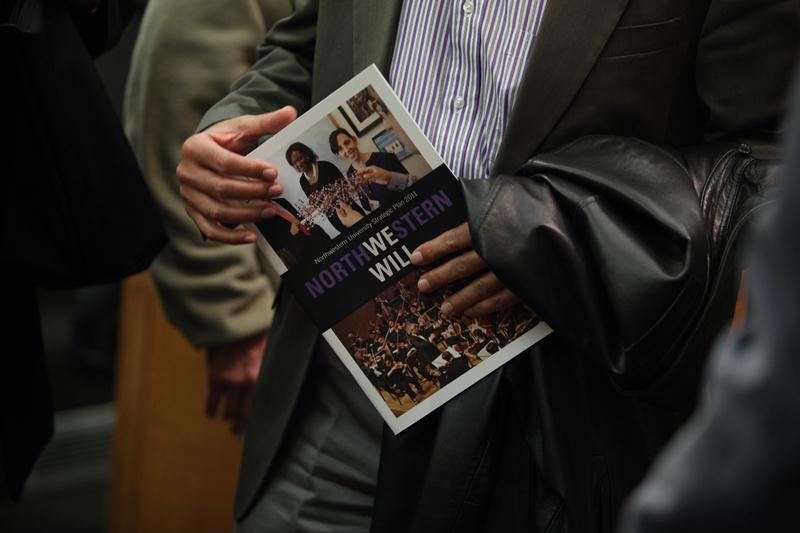Strategic Plan Presentations
November 1 and 2, 2011
A clear direction for how Northwestern will draw upon its strengths and distinct advantages to achieve even greater national and international stature in the coming decade was unveiled during presentations of the University's strategic plan Tuesday, Nov. 1, on the Evanston campus and Wednesday, Nov. 2, on the Chicago campus.
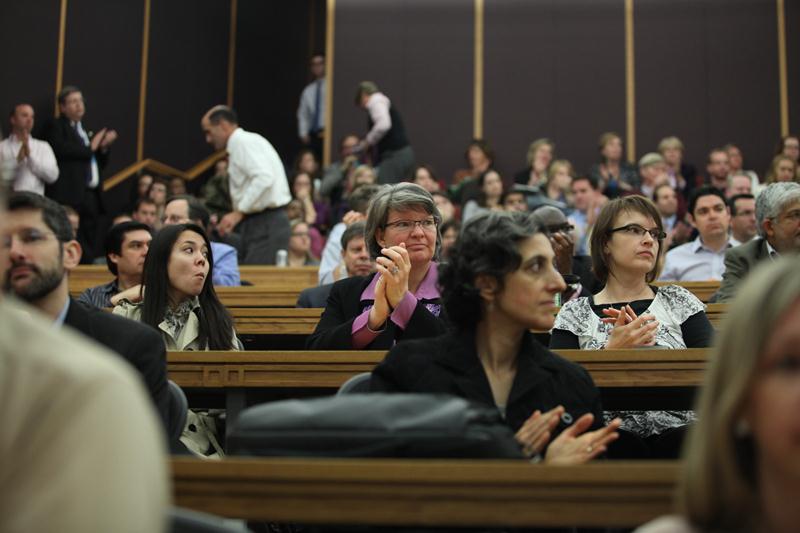 Nearly two years in the making, with input from a host of Northwestern community members, the plan for Northwestern’s future was unveiled by President Morton Schapiro and Provost Daniel Linzer first on the Evanston campus to a packed auditorium of approximately 400 people, with many spilling into the aisles. On the Chicago campus, the plan was presented to about 150 people in a room filled to capacity and, through a video stream, to about 90 people in overflow rooms.
Nearly two years in the making, with input from a host of Northwestern community members, the plan for Northwestern’s future was unveiled by President Morton Schapiro and Provost Daniel Linzer first on the Evanston campus to a packed auditorium of approximately 400 people, with many spilling into the aisles. On the Chicago campus, the plan was presented to about 150 people in a room filled to capacity and, through a video stream, to about 90 people in overflow rooms.
We are Northwestern, the president and provost emphasized to both audiences, and “it is up to us to bring the plan alive,” to keep it dynamic and “put meat on its bones.”
Four simple words -- discover, integrate, connect and engage –- are key to understanding the significant goals the plan outlines. Serving as the pillars or guideposts of the new plan, the words represent areas in which Northwestern already is making a difference and can have the greatest impact. 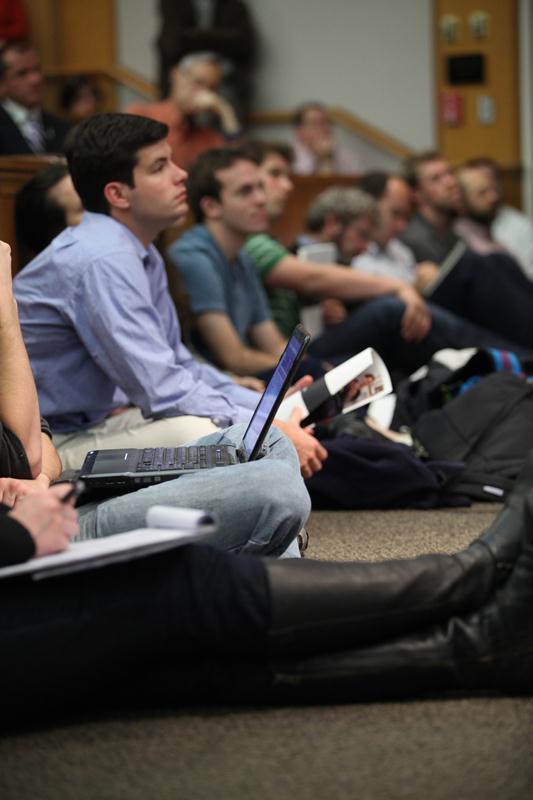
• One of the world’s leading research universities, Northwestern, with its extraordinary breadth of scholarly enterprise, will continue to Discover Creative Solutions, through research and innovation that cross disciplines, interests, schools and continents. The areas targeted are nanoscience, energy and sustainability, biomedical sciences, global health, writing and oral expression, design, media, performing arts, international studies and markets, social structures and public policy. They map to Northwestern’s collection of schools and to big themes that cut across the University. The University, Provost Linzer said, very much believes in supporting high-quality, theoretical academic research as well as translating that research into new technologies and start-up companies. “So theory and practice are our culture and what we embrace in this plan,” he said.
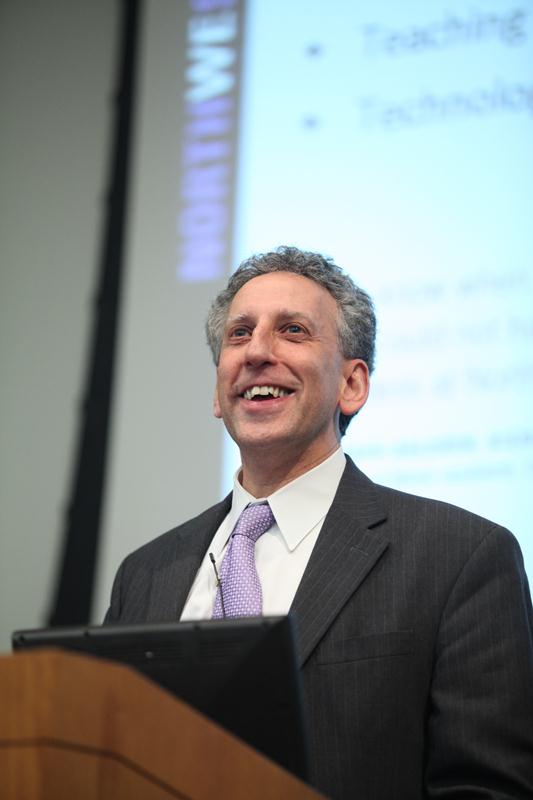 • The University will continue to Integrate Learning and Experience, stressing learning by doing to broaden academic perspectives. The Northwestern community is challenged to seamlessly integrate academic innovation, experiential learning, career development and cross-disciplinary course work to achieve a truly unified learning experience. Students especially value learning from faculty outside of the classroom, President Schapiro said during the Chicago presentation. Students often talk about transforming experiences, such as working at a lab or on a play or at a news storefront in Chicago or in an orchestra, or on a new educational program or on developing a robot, the provost said. Increasing such co-curricular opportunities, here and abroad, is a major goal of the plan.
• The University will continue to Integrate Learning and Experience, stressing learning by doing to broaden academic perspectives. The Northwestern community is challenged to seamlessly integrate academic innovation, experiential learning, career development and cross-disciplinary course work to achieve a truly unified learning experience. Students especially value learning from faculty outside of the classroom, President Schapiro said during the Chicago presentation. Students often talk about transforming experiences, such as working at a lab or on a play or at a news storefront in Chicago or in an orchestra, or on a new educational program or on developing a robot, the provost said. Increasing such co-curricular opportunities, here and abroad, is a major goal of the plan.
• Connect Our Community will mean far more than disparate groups sharing common space, with the University’s unwavering resolve to provide an optimal environment for every member of the community. The plan supports diversity -- in the fullest meaning of the word -- so members of the community can learn from and collaborate with others regardless of their similarities or differences. The University is a place where students can for the first time meet people that are different from them or look different from them, Provost Linzer said. “That is so enriching for us to build a community that we all benefit from.” It doesn't just happen and requires all of us to participate, he said.
• And Engage With the World means Northwestern will not only continue its commitment, across disciplines, to global engagement and partnerships, but also grow relationships with outstanding public and private organizations in the Chicago area. “We are on a college campus in Evanston that is beautiful, that is waterfront, that enables us to do certain things in building community that is hard to do on an urban campus,” Provost Linzer said. “What I heard from students, faculty and staff was how lucky they were to be here at the epicenter of history, and being in the Chicago area gives us an opportunity to be engaged in a world city, a global city.” Northwestern's logistical advantages for global partnerships are especially great, he said, because of the University's campuses in Chicago and Qatar as well as in Evanston, and he cited Northwestern's programs in Asia, throughout Africa, in Central and South America and in Europe. "We are a global university," he said.
Northwestern community members are encouraged to study the plan and do their part to put it into action.
“At Northwestern, we know that we are on strategy when our graduates put their knowledge and leadership into action and the world takes notice,” President Schapiro said. “Whether in a courtroom, a newsroom, a boardroom or a classroom, in a hospital, an African village, a design laboratory or a concert hall, if it becomes a better place because of their presence, we have done our job well.”
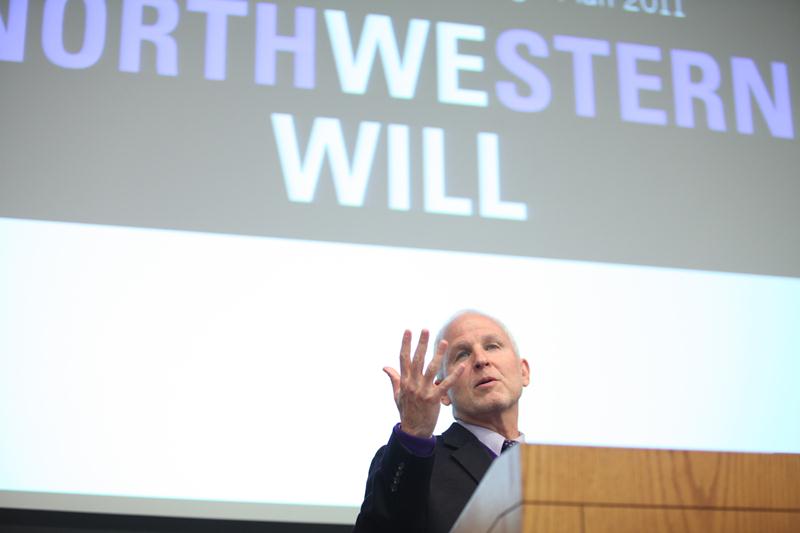
Provost Linzer pointed to key phrases in the strategic plan: “Define yourself. Transform the world.” “A central idea was that we are different from a number of other institutions where you go there to be branded by that institution,” he said. “Northwestern is more of a place that you go to take advantage of all of the opportunities to define yourself, not to be defined within the mold of that institution, and, in so doing, you become really empowered to change the world.”
President Schapiro thanked the 140 members of the task force for their contributions, citing in particular the co-chairs of the task forces and Evelyn Tsai Caliendo, director of planning and special projects at Northwestern.
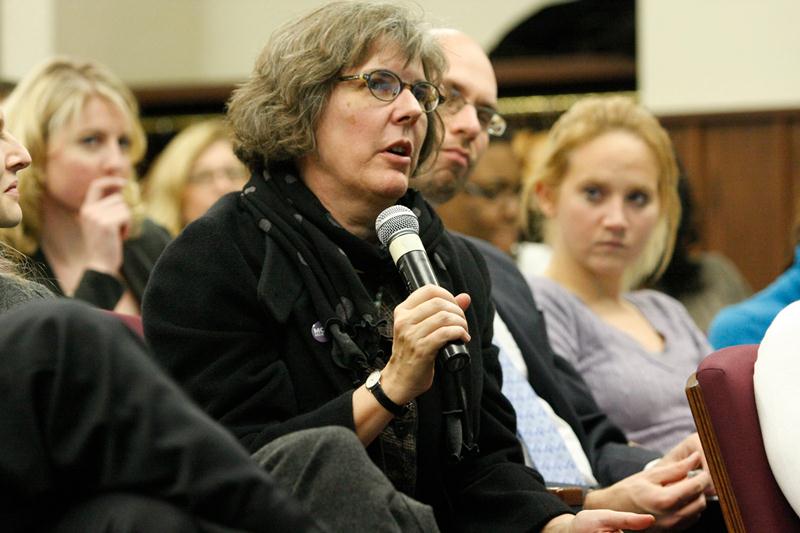
“I think this plan is going to take us to the next level, but we’re starting from a very, very good level now,” President Schapiro said at the conclusion of the presentation. Northwestern's rankings in terms of diversity, international students, applications, yield and NIH funding keep getting better, he emphasized. “There’s not a single metric under which we’re not better than we were 10 or 20 years ago,” he said. “With this plan, we’re going to be better than we can imagine.”
